How to make a sharpening machine from a washing machine motor
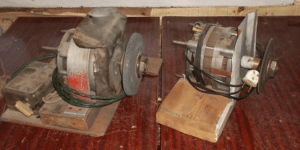 Even the most primitive sharpening machine costs money. This thing is necessary, since scissors and especially knives must always be in good condition. At the dacha, sharpened tools, such as pruning shears, a shovel, an ax and others, are needed even more often; sharpening them manually is not an option at all - it’s just a waste of time. You can make a sharpening machine with your own hands, especially if you have an unnecessary old washing machine. How to make it, first things first.
Even the most primitive sharpening machine costs money. This thing is necessary, since scissors and especially knives must always be in good condition. At the dacha, sharpened tools, such as pruning shears, a shovel, an ax and others, are needed even more often; sharpening them manually is not an option at all - it’s just a waste of time. You can make a sharpening machine with your own hands, especially if you have an unnecessary old washing machine. How to make it, first things first.
What do we take to make a machine?
To assemble a home sharpening machine, you will mainly need a working motor from a washing machine. You can take a 200 W electric motor from a Soviet washing machine, for example, from Rigi-17 SMR-1.5. Although some say that the optimal power is 400 W, while others say that with a power of more than 300 W, the sharpening wheel can fly into pieces. For rare use of the sharpening machine, a motor of 1000 rpm is sufficient.
You won’t need anything else from the washing machine; everything else will have to be turned or cut from scrap material with your own hands. And you will need:
- metal 2-2.5 mm thick for the casing for the sharpener;
- tube for turning the flange;
- grindstone;
- nut for securing the stone to the pulley;
- starting device;
- electrical cable with plug;
- a metal corner or a wooden block for making a frame;
Preparing the flange
The first step is to make a flange or buy a ready-made one. It should be similar in diameter to the engine bushing, and the sharpening stone should fit well on it.The flange is a transition piece between the motor and the sharpener. If you make it from a piece of pipe with your own hands, then you need to cut a thread at one end, approximately at a distance of 2 times the thickness of the circle. A tap is used to cut threads.
The second end of the tube is pressed onto the engine shaft by heating, and then secured by welding or a bolt, drilling a through hole in the tube and in the shaft. Below is a drawing from which you can turn a flange with a turner. Do not forget to indicate all diameters according to your engine and whetstone if you order this work.
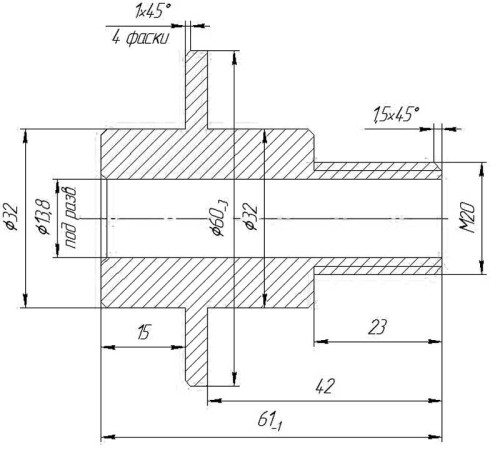
When cutting a thread and putting a grinding wheel on the shaft, you need to take into account the direction in which the wheel will rotate. The thread must be opposite to the rotation of the engine so that the nut holding the circle does not unscrew during operation.
Connect the engine and assemble the base
The next stage of work is to connect the motor from the washing machine to an electrical wire with a plug yourself. To do this, you need to find the starting and operating windings of the motor from a Soviet machine. To do this, use a multimeter and measure the resistance. The working resistance is 12 Ohms, and the starting winding resistance is 30 Ohms. The terminals of the working winding are connected to the electrical cable. With this connection, the grinding wheel will need to be rotated by hand. That's why many people make a start button for this.
You can use a bell button as a trigger, but not an ordinary capacitor. Connecting a capacitor will cause the washing machine motor winding to burn out.
Using the motor from an automatic washing machine, you can do without a start button.The sharpening machine will work immediately after being plugged in. The diagram on the right shows such a connection. The most important thing is to correctly determine the output of the working winding of the motor.
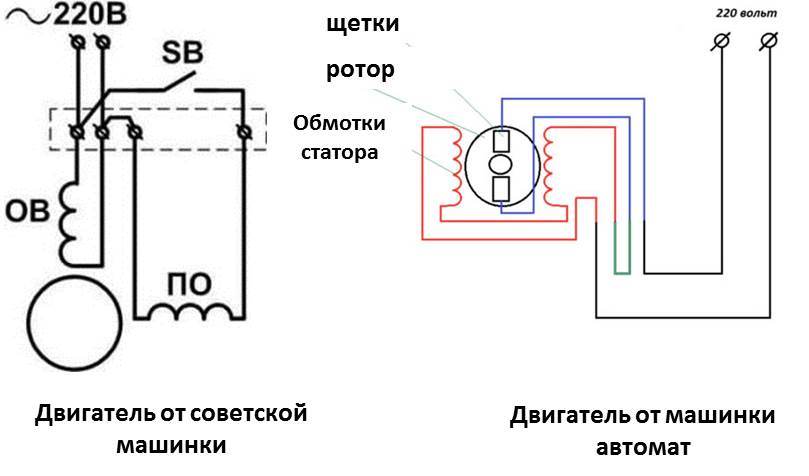
Important! When working with electricians, you need to be careful; if you doubt your abilities, contact a specialist.
And the last thing that needs to be done is the bed or base on which the machine will be mounted. In addition, it is necessary to have a protective cover over the grinding wheel, because small pieces and dust can fly from the grinding stone. The protective casing is best made of metal 2-2.5 mm thick, although there are options for self-made machines with protection made of thick plastic. The bed can also be different, the most reliable is made of a metal corner. Some people attach the machine to the wall, while others prefer a portable sharpener.

This is the advantage of a homemade sharpener; you make it for yourself so that it is convenient for you to work on it. The photo shows some options for homemade machines.
A sharpening machine is one of the most common do-it-yourself devices made from a washing machine engine. You can make anything from such a part, if you want, even honey extractor. But you need to be careful not only when making such equipment, but also when using it, so as not to harm your health. Good luck!
Interesting:
Reader comments
- Share your opinion - leave a comment

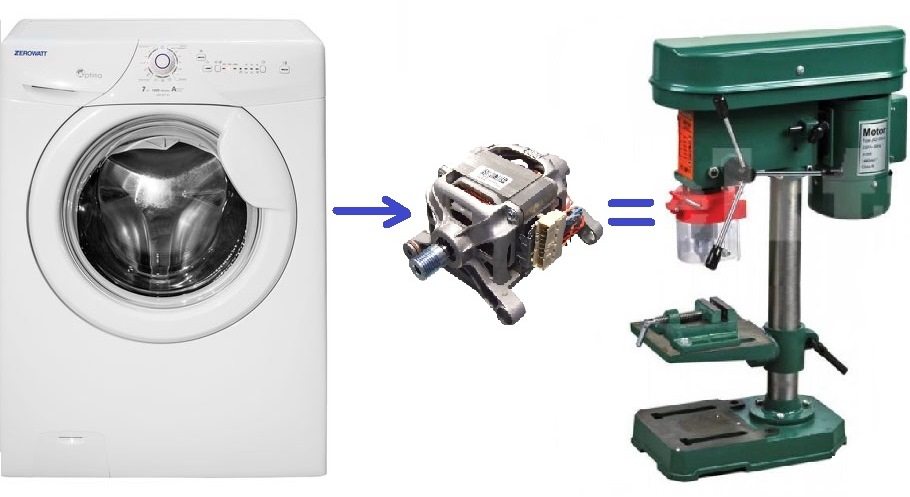

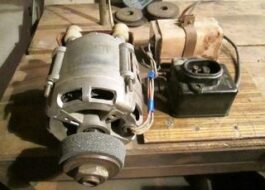
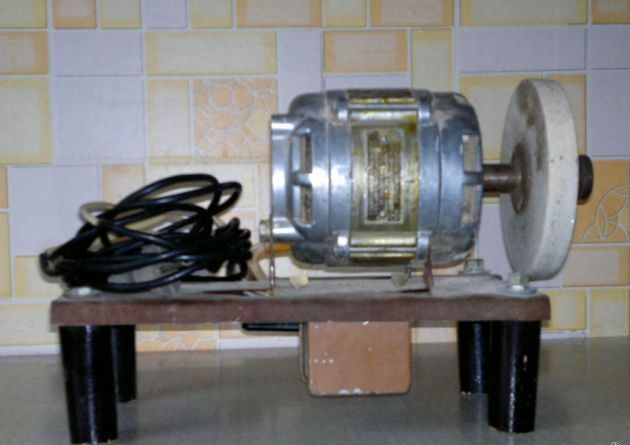
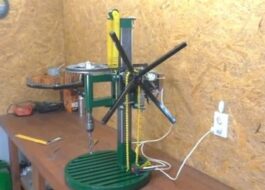















Add a comment